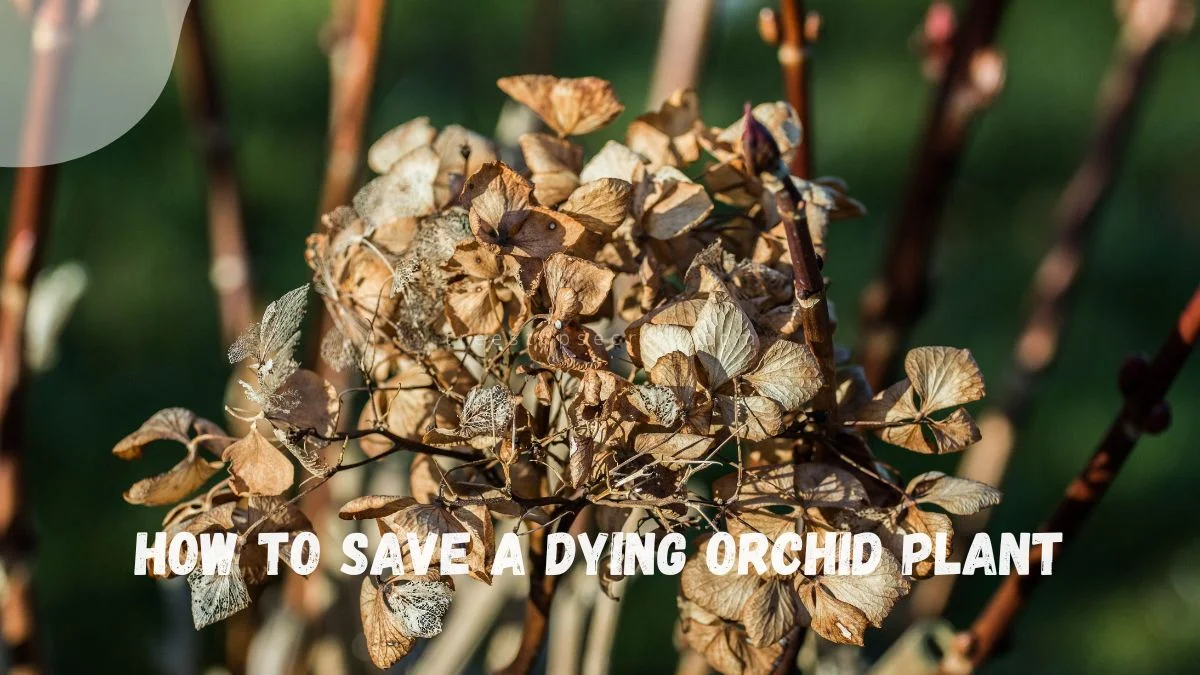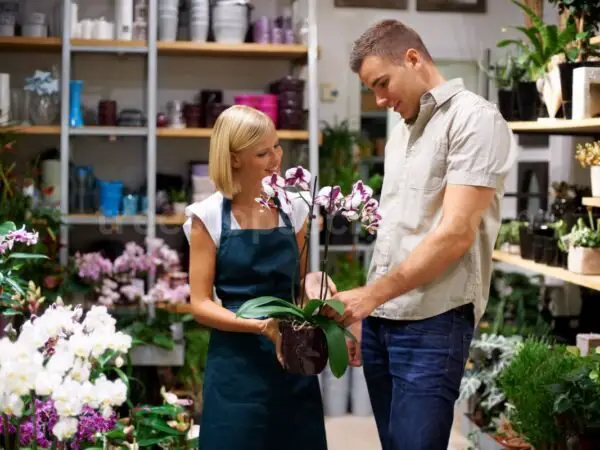If you've found yourself struggling to keep your orchid plant alive, fret not! In this guide, we'll explore effective strategies to save your wilting orchid and nurse it back to health. Orchids are delicate flowers with specific care requirements, and understanding their needs is crucial for their survival. By following our expert tips and techniques, you can give your dying orchid the best chance at flourishing once again. Stay tuned for practical advice on watering, lighting, repotting, and overall maintenance to revive your precious orchid back to its former glory.
Key Takeaways
- Understand Your Orchid: Learn the specific needs of your orchid to provide proper care and environment.
- Revive Through Soaking: Revive a dying orchid by soaking its roots in water to rehydrate and rejuvenate the plant.
- Healthy Repotting: Ensure the health of your orchid by repotting it when necessary, providing fresh substrate and space for growth.
- Manage Diseases and Pests: Monitor your orchid for signs of diseases or pests and take prompt action to prevent further damage.
- Prune for Recovery: Prune dead or damaged parts of the orchid to promote new growth and overall health.
- Essential Care Tips: Implement regular care routines like proper watering, light exposure, and fertilization to maintain the health of your orchid plant.
Understanding Orchid Needs
Right Watering Schedule
To ensure the health of your orchid plant, check the potting mix's moisture level regularly by feeling it with your fingers. Water your orchids early in the day to allow any excess water to evaporate and prevent root rot. Adjust the watering frequency based on the environmental conditions and the specific type of orchid you have.
- Overwatering can lead to root rot, while underwatering can cause dehydration.
- Different orchid species may have varying watering needs, so it's essential to understand your specific orchid's requirements.
Proper Light Exposure
For optimal growth, place your orchids in bright, indirect light to support their photosynthesis process. Avoid exposing them to direct sunlight as it can harm and scorch the delicate leaves of the orchid. To ensure even light exposure on all sides, rotate your orchids regularly.
- Insufficient light can result in poor flowering or stunted growth in orchids.
- Consider using artificial grow lights if natural light is inadequate in your living space.
Ideal Temperature and Humidity
Maintain a consistent temperature range of 65-75°F during the day and slightly cooler temperatures at night to mimic natural conditions for orchids. Orchids thrive in humidity levels of 50-70%, so ensure adequate moisture in the air around them. Use a humidity tray or a humidifier to increase humidity levels if necessary.
- Extreme temperature fluctuations can stress orchids and affect their growth and flowering.
- Monitor temperature and humidity levels regularly, especially during seasonal changes.
Reviving Orchids with Soaking
Soaking Method Explained
When reviving a seemingly dying orchid, start by carefully unpotting it to avoid root damage. Thoroughly rinse the roots to identify healthy ones from dead ones. Next, prune any dead roots and bloom stems before soaking the orchid in a tea/water bath.
Rehydration Benefits
Reviving dehydrated orchids through proper soaking can trigger new root and leaf growth. By rehydrating effectively, you can restore the orchid's ability to bloom again. Enhanced hydration levels not only improve overall health but also boost vitality.
Repotting for Health
When repotting an orchid plant, it is essential to consider the signs that indicate it needs a new pot. Look for overcrowded roots peeking out of the flower pot, signaling the need for more space. If the potting mix starts breaking down or becoming compacted, it's time for a change. Repot orchids every 1-2 years to ensure they have fresh growing medium to thrive.
Choosing the right time to repot your orchid is crucial for its health and well-being. Opt for repotting after the orchid has finished blooming, allowing it to recover from the flowering process. Select a time when the orchid is in its active growth phase, usually during the spring or early summer months. Avoid repotting during the dormant period to prevent unnecessary stress on the plant, promoting a smooth transition to a new environment.
Disease and Pest Management
Identifying Common Issues
Yellowing or browning leaves indicate stress in orchids. Monitor for spider mites or aphids on leaves. Address promptly to prevent damage.
Examples:
- Yellowing leaves may signal root rot due to overwatering.
- Browning leaves could result from insufficient light exposure.
Tips:
- Adjust watering frequency based on orchid species and environment.
- Ensure proper air circulation around orchids to deter pests.
Treating Infestations
Use neem oil or insecticidal soap for common orchid pests. Isolate infested plants to prevent spread. Regularly inspect for early signs of infestations.
Examples:
- Spider mites can be treated with a solution of neem oil and water.
- Aphids are effectively controlled using insecticidal soap sprays.
Tips:
- Quarantine newly purchased orchids to prevent introducing pests.
- Prune affected areas and dispose of dead plant material properly.
Pruning for Recovery
When to Trim Roots
Trim roots that show signs of damage such as being mushy, discolored, or emitting a foul odor. This indicates potential root rot, which can harm the plant. Use sterilized tools to cut these roots during repotting to prevent the spread of diseases. Trimming roots at this stage can stimulate the growth of new, healthy roots.
Removing Dead Parts
To promote the recovery of a dying orchid plant, it is essential to remove any dead or decaying parts promptly. This prevents diseases from spreading further within the plant. Trim off dried bloom stems as they no longer serve a purpose and redirecting energy towards healthy growth is crucial. Prune yellowing leaves to encourage the development of new, vibrant leaves.
Essential Care Tips
Adjusting Care Routine
To ensure the well-being of your orchid plant, modify watering frequency according to seasonal changes. Adjust based on temperature and humidity levels. If orchid leaves display signs of sunburn or insufficient light, alter their exposure. Continuously monitor your orchid's response to these care adjustments, making further changes as necessary.
- Pros: Better adaptation to changing environmental conditions.
- Cons: Requires regular monitoring and adjustment.
Monitoring Plant Health
Regularly inspect your orchid for new root growth, indicating successful rehydration. Watch for improvements in leaf color and texture to gauge overall health. Stay vigilant for any changes in your orchid's behavior, promptly addressing potential issues that may arise.
- Check for new root growth.
- Observe leaf color and texture changes.
- Monitor behavioral changes in the plant.
Summary
Understanding the needs of your orchids, reviving them through soaking, repotting for better health, managing diseases and pests, pruning for recovery, and following essential care tips are crucial steps in saving a dying orchid plant. By providing the right environment, proper watering, necessary nutrients, and protection from pests and diseases, you can help your orchid thrive and bloom again. Remember to monitor your orchid's progress closely and make adjustments as needed to ensure its well-being.
Take action today by implementing these strategies to save your dying orchid plant. Your dedication and care can make a significant difference in the life of your orchid. Keep learning about orchid care and stay committed to providing the best possible conditions for your plant's growth and revival.
Frequently Asked Questions
How often should I water my orchid plant?
Water your orchid plant once a week, allowing excess water to drain out completely. Check the moisture level by touching the top layer of the soil – it should feel dry before watering again.
Can I revive a dying orchid by soaking it in water?
Yes, soaking your dying orchid in room temperature water for about 10-15 minutes can help rehydrate the roots and improve its overall health. Ensure proper drainage after soaking to prevent root rot.
When should I repot my orchid for better health?
Repot your orchid plant every 1-2 years or when you notice overcrowded roots, stale potting mix, or poor drainage. Choose a slightly larger pot with fresh orchid-specific potting mix to promote growth.
How do I manage diseases and pests affecting my orchid?
Inspect your orchid regularly for signs of pests like mealybugs or diseases like fungal spots. Treat issues promptly with appropriate fungicides or insecticides recommended for orchids to prevent further damage.
Is pruning necessary for helping a dying orchid recover?
Pruning dead or yellowing leaves, stems, or roots is essential for redirecting energy to healthy parts of the plant. Use sterilized tools to make clean cuts and promote new growth in your struggling orchid.
What are some essential care tips for maintaining a healthy orchid plant?
Provide adequate indirect sunlight, maintain proper humidity levels, fertilize lightly during growing seasons, and ensure good air circulation around your orchid. Avoid overwatering and extreme temperature fluctuations to keep your orchid thriving.
Image Source: Paid image from CANVA





